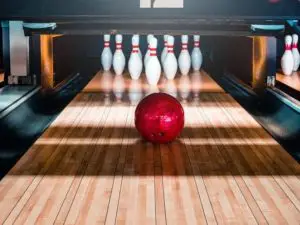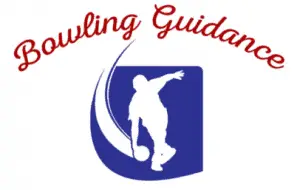
Are you familiar with the “pin length” and “top weight” of bowling balls? No? Don’t worry, you’re not alone. Many avid bowlers bowl regularly or every now and then and not everyone knows what they are. Are you in a similar situation? Well, here we are to acknowledge you with some special features of bowling balls and what are their purposes. Bowling ball pin length and top weight- both are unavoidable factors that you should check before getting a bowling ball. So make some tea, sit back, relax, and let’s get started!
What is Your Bowling Ball Preferred Pin Length?
If you’re reading this article, I will assume you have come across ‘pin length’ in a bowling ball’s description and specification. Well, each ball has its own pin length and the typical length for the pin is usually 2” to 4”.
Let’s think of the core as the engine of a bowling ball. When the core is installed in a bowling ball, it needs to be positioned in the center of the ball perfectly. To do that, bowling ball manufacturers usually use a small pin. What the pin does is— it suspends and supports the core inside the ball in a stationary position until the coverstock material (mold) solidifies.
Do remember the pin is removed, once the ball is completely solidified. Then the small pin-hole is covered with a different color in contrast to the color of the ball’s coverstock. That is why the colored dot you see on the ball is in a different color. Closed to that colored dot, you will see a very small marking (on some balls it’s a circle) that indicates the ball’s CG (center of gravity).
So when you can see a pin mark on a bowling ball, it indicates the top of the core. If you observe carefully, you will see that when your bowling ball rolls, it rotates around the point, meaning, the pin mark will be directly touching the lane surface, once in every rotation.
How does pin length affect a bowling ball?
It’s a common misconception that balls with longer pin length (3”- 4”) have a better reaction and the ones with shorter pin length (0 – 1”) will not hook. Well, that isn’t true at all. Depending on what you put the pin length relationship with positive axis point– that’s what is going to tell you whether your ball will hook or not. Usually, when it comes to high performance bowling balls, CG and pin lengths don’t really matter much.
What is the Top Weight of a Bowling Ball?
One of the most important factors of a bowling ball is the top weight. If you don’t know what is that already, let us clarify. So, imagine a bowling ball being cut in half and both parts are weighed. The pin mark indicates the top of the ball, and the opposite of that indicates the bottom. Simply put, top weight is the weight difference between the top half and the bottom half of a bowling ball.
According to USBC, the top weight limit is about 3 ounces. This means the top half and the bottom half shouldn’t have a difference of more than 3 ounces. This weight difference is important because it gives an idea about where holes should be drilled into a ball to create a balance between the top half and the bottom half. Drilling surely makes a bowling ball lose some of its weight. In most cases, the drilling extracts a certain weight which is equal to the weight difference. Once the drilling is done, the weight difference is reduced significantly and it may even come to zero.
In the past, bowling ball was designed in a way that made the top weight promote backend and length whereas the bottom weight delivered earlier roll. But things are different with the recently designed bowling balls. Now the top weight almost has no impact on the ball rolling.
How to determine pin length and top weight of undrilled ball?
When you’re shopping online, you will see that there is a bowling ball specs section where you will find all of the necessary information. Besides, the ball’s coverstock and core type, you may see the pin length and top weight is mentioned too. Bear in mind, most bowling balls come undrilled. So this is the best way to know this info.
If you can’t manage to get to know it from the ball specs, then take your bowling ball to a local pro shop. The operator will put the ball on the dodo scale to measure its top weight. And as for the pin length, check where your pin mark is and where the CG is pointed. Measure the distance between the pin dot and CG dot/circle and there you will have the pin length. For measurement purposes, you should use a divider tool. A compass can also be used for that. You can tell it’s pretty easy!
Conclusion
Were you too worried about the pin length and top weight of your bowling ball? Well, we would suggest you leave that to the pro shop operators (PSO). Nowadays, bowling balls are designed and manufactured very carefully so that it is USBC approved. Just make sure the pin length is between 2” and 4” and the top weight is between 2 to 3 ounces. If something is wrong with your bowling ball, your PSO will inform you. Otherwise, stay worry-free and enjoy bowling!

